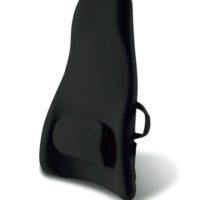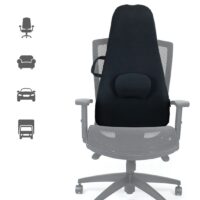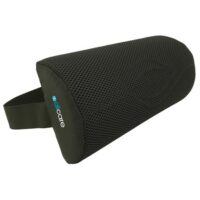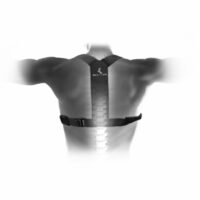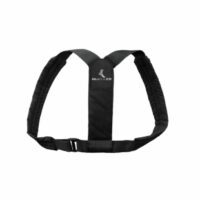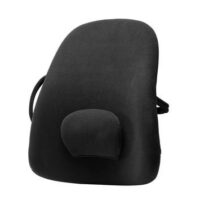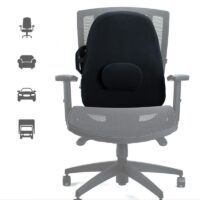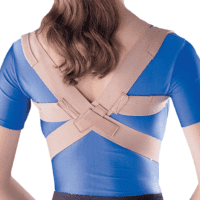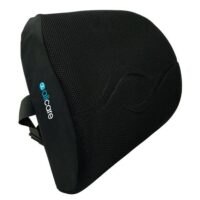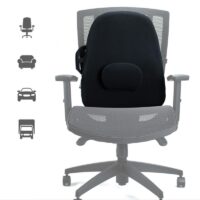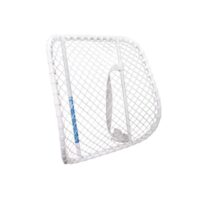Posture Correction
Article by John Miller


Posture Correction
Unlock Your Posture Potential
You’re not stuck with bad posture forever! Understanding your postural habits can change your posture at any age. Your body’s tissues, capable of renewing and adapting, are key. Younger folks might adapt quicker due to faster tissue renewal, but older individuals can still make significant gains. Even if you can’t completely reverse postural changes, slowing down age and habit-related deterioration is a big win.
The Role of Posture Correction Tools
In cases of pronounced muscle fatigue, tools like posture braces and supports, correctors, exercises, and taping come in handy. They act as reminders, helping your body shift towards better posture.
Do Posture Braces Really Work?
Posture braces are especially useful in the early stages of postural training. They provide control for the lower back, upper back, and shoulders. As your posture improves, you can move from heavier braces to lighter ones, and eventually, kinesiology taping can be enough to maintain perfect posture.
Kinesiology Tape for Posture
Kinesiology taping is a minimalist approach, ideal when slight posture correction is needed. It serves as a subtle reminder, aiding your transition from heavier support braces to normal posture.
Support for Upper Back & Shoulders
Upper back and shoulder braces are fantastic during the initial phase of posture correction. They enhance your awareness of correct posture. Wearing these braces for a few hours daily trains your body to recognise and maintain proper posture.
Lower Back Postural Braces: The Foundation
Good posture starts from the base. Lower back sitting cushions are essential. They help rectify long-standing poor postural habits and reacquaint your body with the sensation of normal posture.
Sitting Posture Support Devices
To improve your sitting posture, use passive aids like cushions. These devices support you while your postural muscles gain strength, perfect for preventing short-term and long-term slouching.
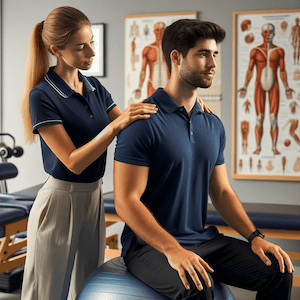
Exercise Ball: More Than Just Exercise
Exercise balls aren’t just for workouts; they’re great for retraining postural muscles when used as a chair alternative.
Spine Mobilisation Equipment
A stiff spine can be a roadblock to good posture. Physiotherapists can target specific stiff areas, and you can also assist this process at home with spine mobility equipment. There is also home DIY tools that may assist.
Sleep Posture Matters
Don’t ignore your sleeping posture. A supportive pillow and mattress are crucial for both good sleep and spine support.
Conclusion: Take Charge of Your Posture
Improving your posture is a journey that needs patience and consistency. The right tools and practices can make a significant difference. But, for personalised advice, consult a professional physiotherapist specialising in posture correction.
Seek Professional Advice
Always consider seeking the advice of a qualified physiotherapist for tailored recommendations and to keep up with the latest research in posture correction.
This article serves as a guide to understanding the importance of posture correction and is not a substitute for professional advice.
Article by John Miller
Posture FAQs: Your Guide to Better Posture
Welcome to your go-to resource for improving posture! Here, we'll tackle common posture-related queries, provide tips for enhancing it, and share insights on maintaining proper posture.
1. Discover Quick Posture Correction Techniques
Find out effective methods to quickly improve your posture and realign your body. Find ways to address long-term posture issues and learn the steps for gradual improvement.
Read more: Posture Correction
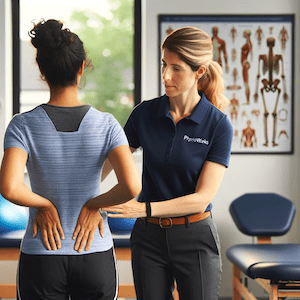

2. Understanding the Importance of Good Posture
Learn why maintaining good posture is crucial for your overall health and daily life.
Read more: What is Good Posture?
3. Sitting with the Right Posture
Learn the correct way to sit, incorporating ergonomic principles to support your spine and reduce strain.
Read more: Sitting Posture
4. Enhance Your Standing Posture
Explore the best techniques for maintaining an optimal standing posture, promoting balance and reducing muscle tension. Get tips and exercises to strengthen your muscles and improve your standing posture over time.
Read more: Standing Posture
5. Sleeping Postures for a Healthier You
Discover the healthiest sleeping positions to prevent discomfort and support your spine during sleep.
Read more: Sleeping Posture
6. Products for Better Posture
Browse products designed to assist in maintaining proper posture in your daily activities.
Read more: Posture Products
7. Demystifying Posture Trainers
Understand if posture trainers are effective for enhancing your posture and improving body alignment.
Read more: Posture Trainers
8. Understanding and Improving Back Posture
Learn how to identify and correct common issues with back posture to prevent pain and discomfort.
Read more: Back Posture
9. Addressing Neck Posture for Better Health
Discover techniques and tips for maintaining proper neck posture, crucial for avoiding strain and tension.
Read more: Neck Posture
10. Overcoming Bad Posture
Identify bad posture habits and learn strategies to correct them, promoting better alignment and health.
Read more: Reversing Bad Posture
11. Effective Posture Exercises
Explore exercises specifically designed to improve posture, strengthen muscles, and promote alignment.
Read more: Posture Exercises
12. Seek Professional Guidance
Sometime some professional guidance from a healthcare professional with training in posture assessment and correction is just what you need to get you started. If needed, please book a posture assessment with one of our posture physiotherapists to fast-track your posture correction. By applying our advice, you're on the path to a healthier, more confident version of yourself!
Effective Management of Upper Back Pain and Injury
Physiotherapy Insights
Introduction
Upper back pain and injury, predominantly affecting the thoracic spine, are prevalent issues causing significant discomfort and impacting daily activities. This article, infused with physiotherapy insights, aims to enlighten the general public about the causes, symptoms, and treatment options for upper back pain.
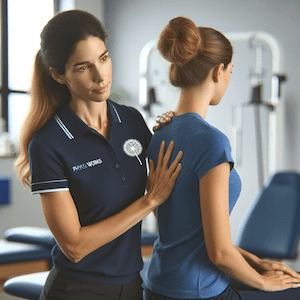

Managing Upper Back Pain
Upper back pain stems from various sources, including thoracic spine conditions, joint injuries, muscle strains, nerve irritations, and systemic diseases. Recognising these causes is vital for appropriate treatment.
Common Causes of Upper Back Pain
- Joint Injuries: Facet joint pain is a frequent issue.
- Muscle-Related Injuries: This includes back muscle pain, side strains, whiplash, muscle cramps, and DOMS (Delayed Onset Muscle Soreness).
- Bone-Related Injuries: Conditions like Scheuermann's Disease, Scoliosis, and others.
- Disc-Related Injuries: Including bulging, slipped, or herniated discs.
- Nerve-Related Pain: Such as thoracic outlet syndrome and pinched nerves.
- Systemic Diseases: These include Ankylosing Spondylitis, Fibromyalgia, and arthritis types.
Posture and Upper Back Pain
Poor posture is a significant contributor to upper back pain. Understanding and correcting sitting, standing, and sleeping postures can prevent and alleviate pain.
Physiotherapy Perspective
A physiotherapist's approach to treating upper back pain involves assessing the individual's condition and tailoring a treatment plan. This may include exercises, manual therapy, and advice on posture correction.
Latest Research and Techniques
Recent advancements in physiotherapy have introduced innovative methods for treating upper back pain. These include targeted exercises, advanced manual techniques, and utilisation of posture-improving products.
What to Do?
If you experience upper back pain, it's crucial to consult a physiotherapist for a professional assessment and personalised treatment plan.
Conclusion
Upper back pain, though common, can be effectively managed with the right approach. Understanding its causes and seeking professional physiotherapy advice are key steps towards recovery.
For more information, explore articles at PhysioWorks.
Related Articles
Joint Injuries
Muscle-Related Injuries
Bone-Related Injuries
Disc-Related Injuries
Nerve-Related / Referred Pain
Systemic Diseases
Posture Information
- Posture Syndromes
- Posture Improvement: A Guide to Improve Your Posture
- Improving Your Posture: A Guide for Better Health
- How to Achieve Perfect Posture



